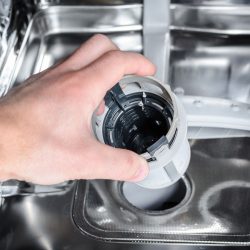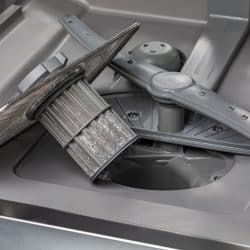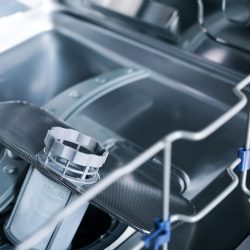After a while, dishwashers tend to get stinky and work less efficiently. At this point, it's likely time to wash the filter. However, it becomes a problem because not all dishwashers are the same. Do you need help removing and cleaning a KitchenAid dishwasher filter? Let's discuss how to do so.
Start by locating the dishwasher's filter. It will usually be at the bottom. You can remove the filter with a quarter turn counterclockwise. Then, lift it out. Afterward, rinse the filter in the sink.
The steps sound simple. That's because they are! However, it's always better to get all the details. If you need a detailed step-by-step guide for removing and cleaning the dishwasher filter, we'll help with the process.
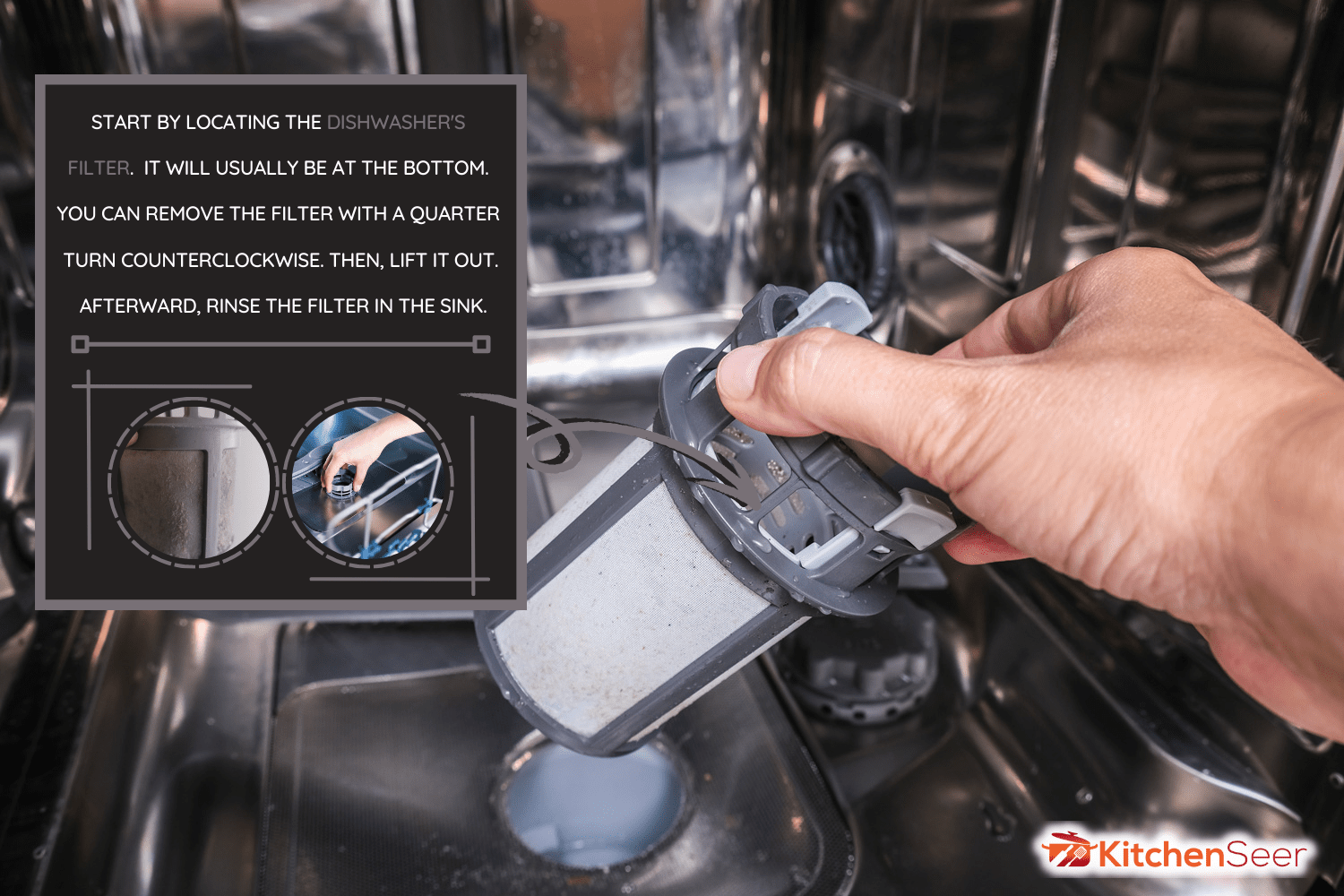
Removing The Dishwasher Filter (On Newer Models)
Before we clean the filter, we have to find it. In addition, we need to know the appearance of the filter. Fortunately, most dishwasher filters will be at the bottom.
Therefore, you might need to remove the bottom rack to access it. Otherwise, slide it out as far as you can. Then, you will be able to see three components.
The four-armed or two-armed handle at the bottom is the spray bar. Underneath it will be the lower filter. Then, you will find a cylinder-shaped upper filter on the right side of the lower filter.
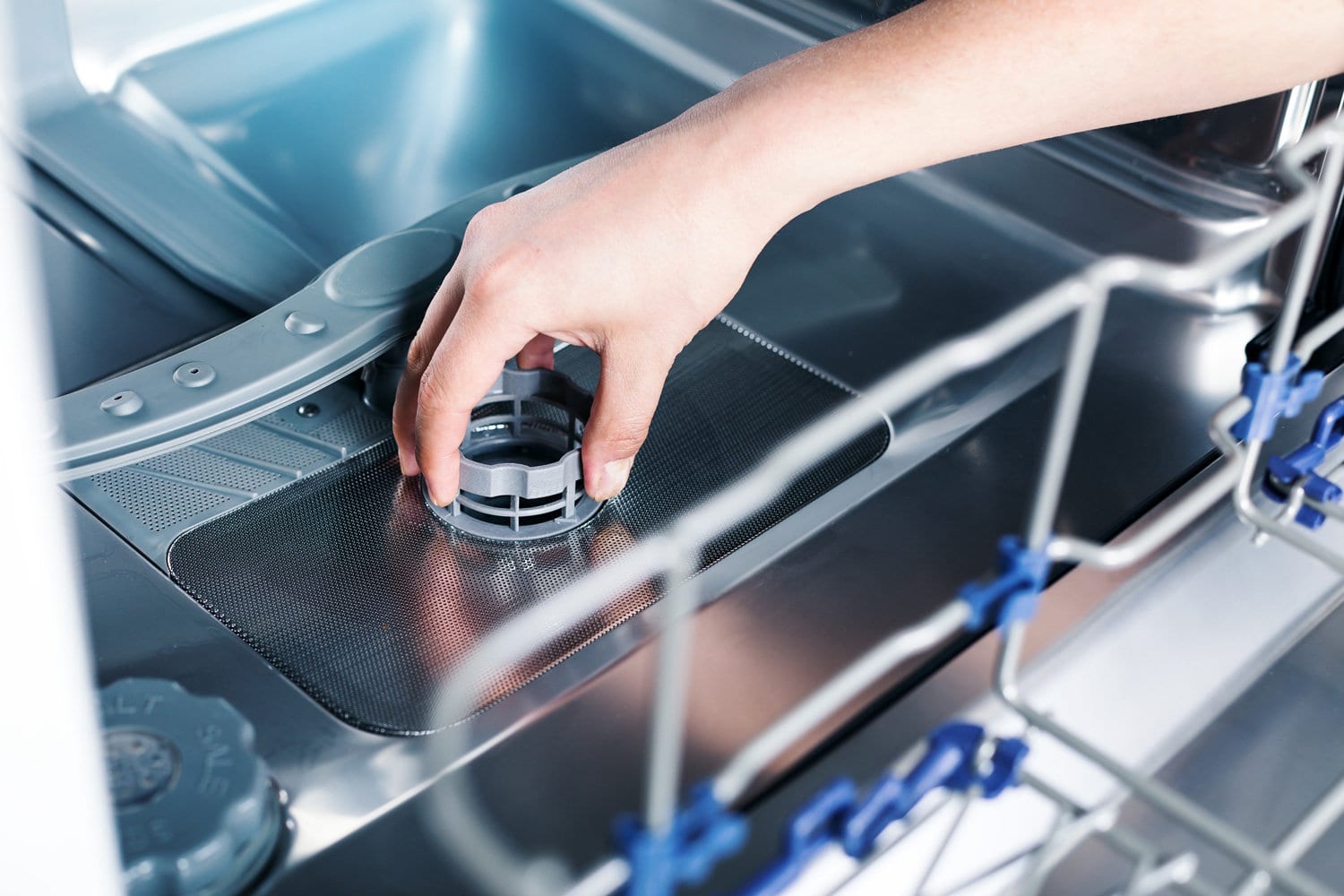
It will look similar to the photo above.
Accessing The Filter
The two components we will focus on are the mesh lower filter and the cylinder-shaped upper one. The upper filter holds the lower one in place. So, we have to remove the one on top first.
You can do that with a quarter turn counterclockwise. It's worth keeping in mind that you might need to use a little effort. Though, not enough that you will struggle.
After doing a quarter turn counterclockwise, you should be able to lift it freely. The lower filter will be able to move too. All you need to do is pull it out.
Cleaning The Filter
At this point, you should have a cylinder-shaped upper filter that looks like the one in this photo:
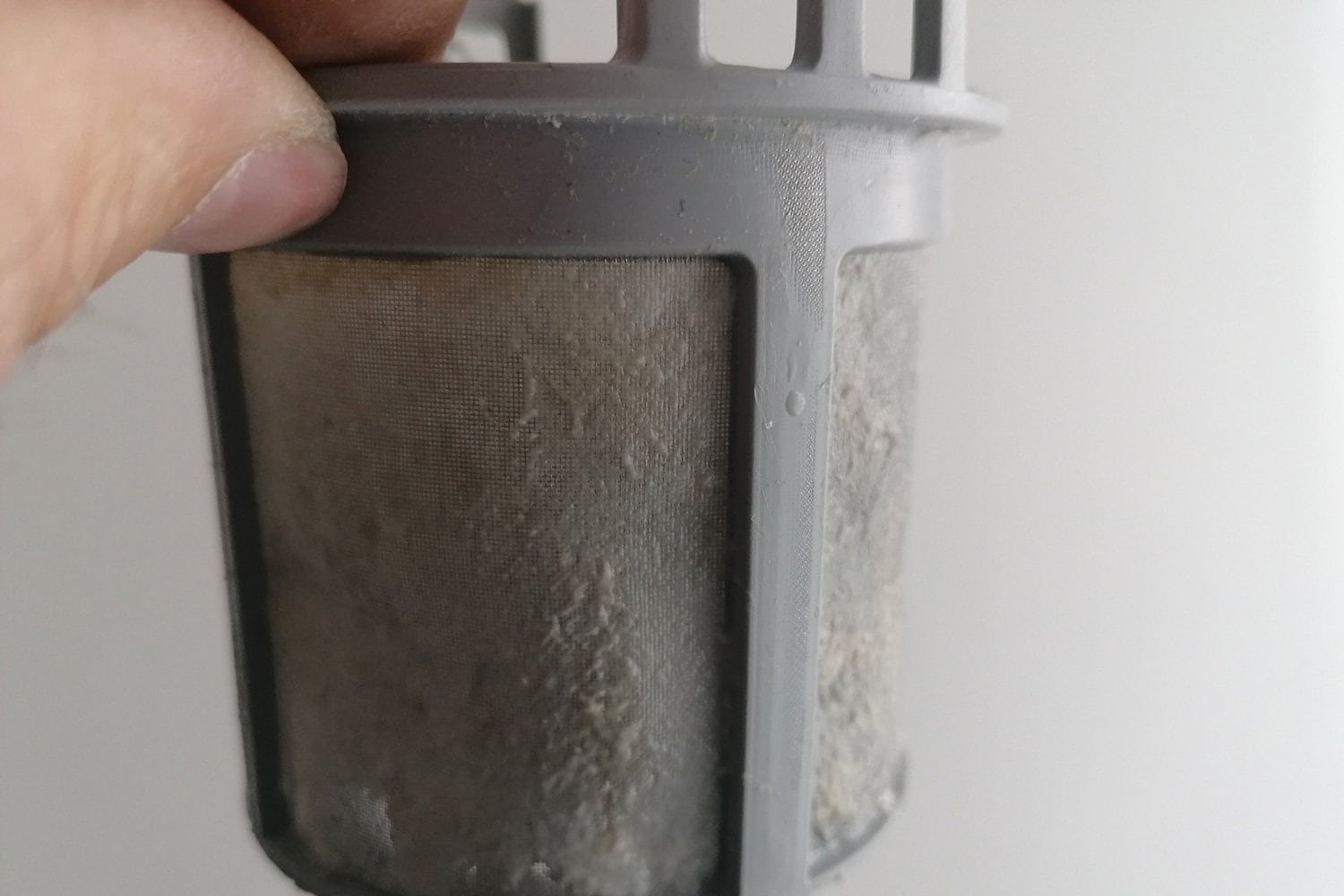
The lower filter will be crescent shaped. The shape of the lower filter will vary from brand to brand and model to model. However, KitchenAid lower filters tend to be slightly U-shaped.
In any case, take these two to the sink. Take an old toothbrush and scrub the grime off the upper filter. If you have some stubborn residue that won't wipe off, you can use dish soap to help.
Do the same to the lower filter. Scrub any grime away with a toothbrush. Of course, rinse it under warm water.
Cleaning the Filter Area
You'll also have to think about cleaning the filter area. If you haven't kept up with maintenance, grime will linger at the bottom of the dishwasher. More specifically, there will be residue in the area that holds the upper filter.
There will also be excess water there. Take a sponge and soak it out. Once all the residue is clear, you can put the filters back into place.
Placing The Filters Back
Start by placing the lower filter back. There's no locking mechanism. So, you will only have to line it up with the dishwasher tub.
However, there is a locking mechanism for the upper filter. If you don't lock the filter into place, it could damage it. So, place the upper filter into its slot. Make a quarter turn clockwise.
It should lock into place with little effort. Before you slide the rack back inside, verify that the filter is firm. More specifically, it shouldn't be able to move freely.
If the upper filter doesn't move, you've locked it into place correctly. The same goes for the lower filter. Since the upper filter holds it in place, it shouldn't be able to move.
Here's a YouTube video to give you a better picture of what you will be dealing with:
Older KitchenAid Dishwashers
KitchenAid has come a long way in its technology. Some of their dishwashers do not look like the models shown above. Accessing the filter in older KitchenAid dishwashers is a bit more tricky.
You'll need a drill with a star drill bit to remove some screws. In addition, pliers will be necessary to remove a screw from one of the components. The job will take longer—about 15 minutes or so.
Accessing The Filter
Start by removing the bottom shelf. It's held in place using clips. To unlock it, press the clip inwards and push it up.
Then, take your pliers and grip the screw in the middle of the spray bar. The center will have a small handle that the pliers can grasp. Turn the spray bar counterclockwise to release it.
Next, you will need to remove the dishwasher arm. There will be clips holding it in place in the middle and ceiling of the dishwasher. The clips should be able to pop off easily.
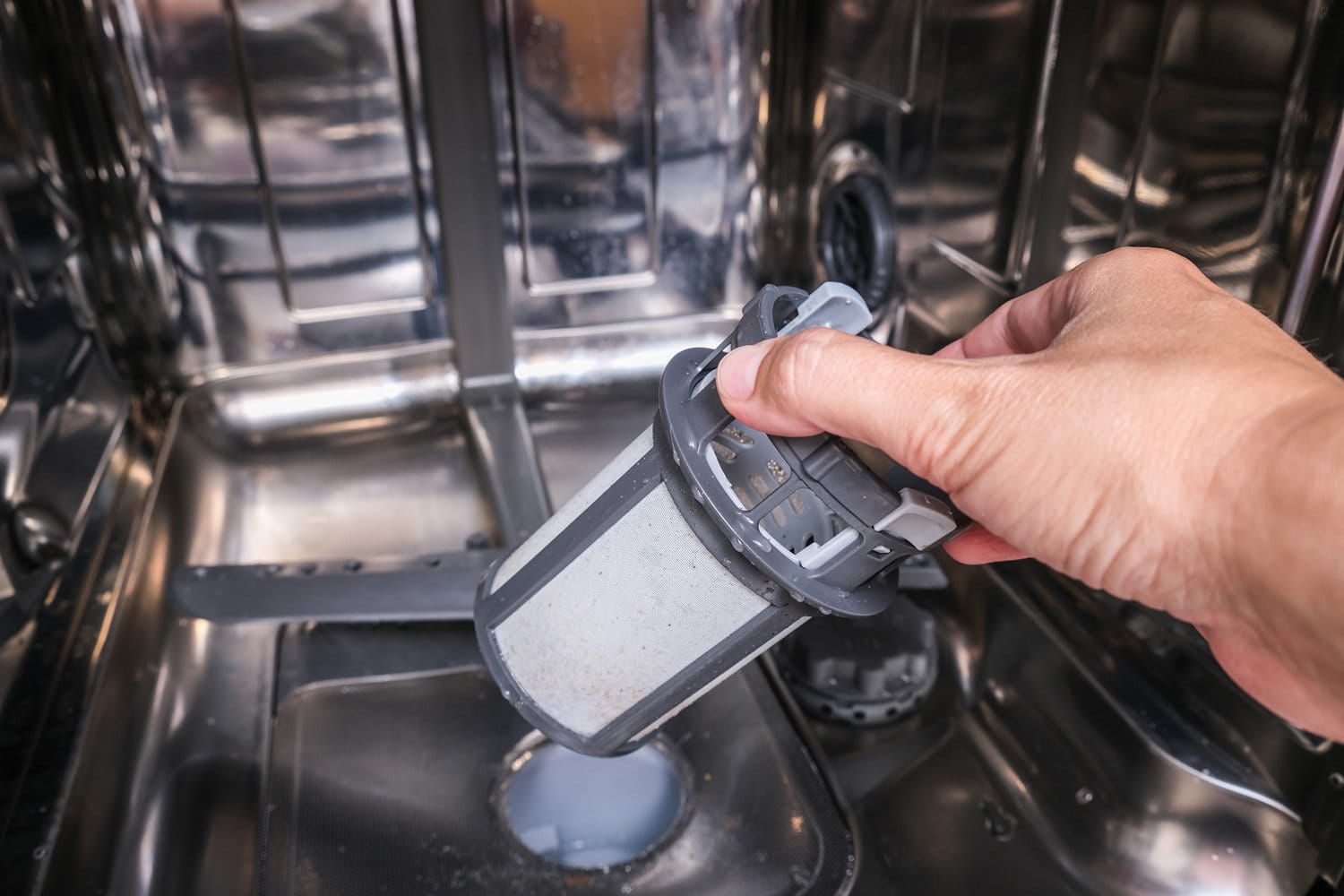
Removing The Screws
At the bottom, you will see three screws. Use your drill with the star bit to remove the three you can see. Then, turn the arm about 45 degrees to the right.
You should be able to see the fourth screw that you need to remove. Once you remove the fourth screw, the arm should be able to move freely. Set it aside.
Remove the lower spray arm pump in the middle. Then, you can pop the filter assembly off. Grab the center and pull up.
Cleaning The Filter
You can rinse the filter assembly under warm water in the sink. Of course, use an old toothbrush to scrub away stubborn debris.
You'll always want to clean the bottom of the dishwasher, as this is where most of the gunk will gather. You may need long-nose pliers to remove the debris in there. In any case, try your best to clean it out.
Click here to see these long-nose pliers on Amazon.
Reassembling The Dishwasher
Once you're satisfied with the cleaning, it's time to work your way backward. Put the filter assembly back into place. Then, place the lower spray arm pump in the center.
Use your drill or screwdriver to lock the filter in place. Take the dishwasher arm and clip it back in. Next, take your pliers and grip the screw in the center. Take the spray bar and turn it clockwise. Finally, use the clips to lock the dish racks into place.
It can be tough to follow along through text. So, if you're a visual learner, here's a YouTube demonstration:
Here's another video with a KitchenAid dishwasher specifically:
KitchenAid Maintenance-Free Dishwasher
The more modern KitchenAid dishwashers have a maintenance-free filtration system. It's a simple process to clean out the filter.
Instead of holding the debris under the bottom, it keeps it in a cup-like filter. All you have to do is pull it out and empty it. There are no locking mechanisms to mess around with.
Here's a video demonstrating how it works:
Do All KitchenAid Dishwashers Have Filters?
As we can see from the different dishwasher models, KitchenAid dishwashers always include a filter. However, the way to access the filter varies from model to model.
The older KitchenAid dishwashers will have harder-to-access filters. It's typically a mesh filter on the underside of a larger assembly. Modern KitchenAid dishwasher filters are easy to access.
You might need to twist the filter to unlock it. Otherwise, it's as easy as lifting it out.
What Happens If You Don’t Clean Your Dishwasher Filter?
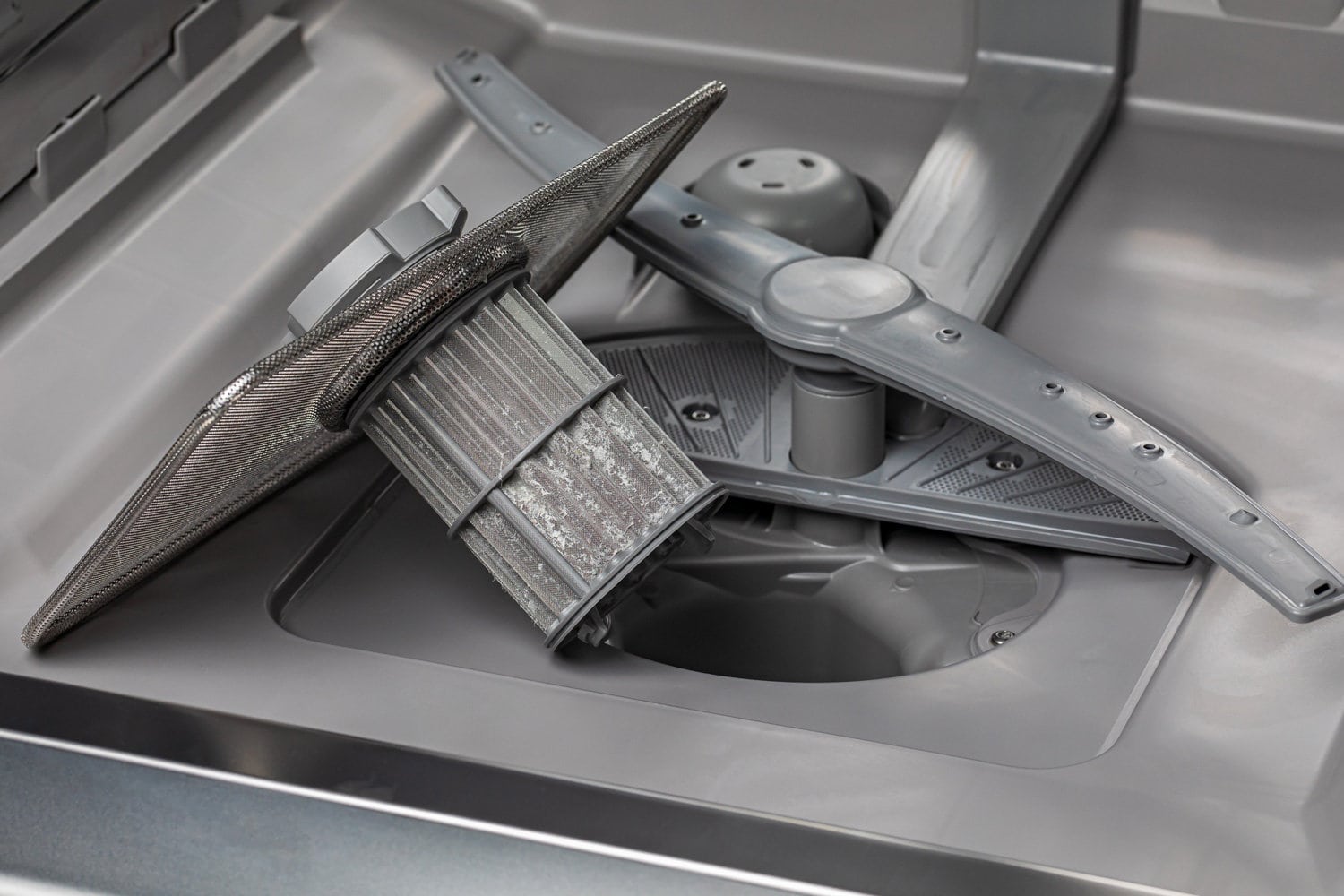
Dishwashers are in charge of doing the dirty work of washing dishes. However, they're not efficient in the way they dispose of the gunk; it typically collects at the bottom.
If you don't clean the filter, the gunk will continue to collect in the filter. It might not seem like a problem initially, but it will become apparent later. Since the food has nowhere to go, it will begin to decompose.
As you might already know, this means an odor will develop. Though, this is the least of your worries. The main concern is the cleaning efficiency of the dishwasher.
Once too much gunk gathers at the bottom, it will likely make its way to the spray bar. Therefore, it will clog components other than the filter. As a result, you get dishes that aren't as clean out of the dishwasher as they used to be.
Filter Replacement
In the worst case, the gunk at the bottom might be enough to break the filter. It could even break the machine. Of course, that's if the buildup gets bad enough to make its way into the machine.
Modern dishwashers, such as KitchenAid maintenance-free dishwashers, are better equipped to deal with this problem. However, the filters in older models will need weekly or monthly cleaning. It all depends on how often you use it.
Final Takeaway
It's not worth waiting any longer to clean out a dishwasher filter. As we've learned, cleaning the filter is not difficult. However, some models will require a little more effort to clean. We hope you found this informative. Good luck with the cleaning process!
Before you go, do you have more KitchenAid dishwasher concerns? Are you having doubts about the runtime? To learn more, check out:
How Long Does A KitchenAid Dishwasher Run?
What about water usage? If you'd like to learn more, check out:
How Much Water Does A KitchenAid Dishwasher Use?


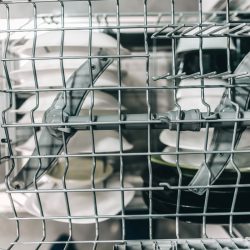
![Man's hand taking out a dishwasher filter, Do Amana Dishwashers Have Filters [And How To Clean Them]](https://kitchenseer.com/wp-content/uploads/2021/11/Mans-hand-taking-out-a-dishwasher-filter-Do-Amana-Dishwashers-Have-Filters-And-How-To-Clean-Them-250x250.png)
